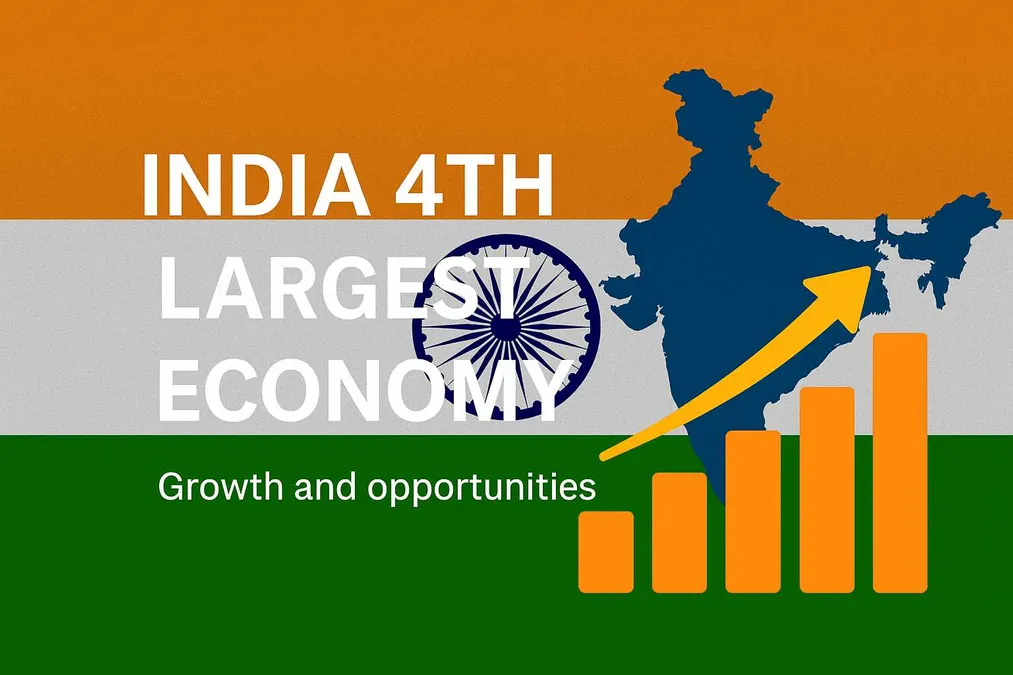New Delhi, May 25, 2025 – India has officially overtaken Germany to become the 4th largest economy in the world, marking a significant milestone in its economic journey. With a GDP exceeding $4.4 trillion, India continues its remarkable ascent on the global stage, driven by digital innovation, structural reforms, and a dynamic young workforce.
A Historic Shift in Global Economic Power
According to the latest data released by the International Monetary Fund (IMF) and corroborated by the World Bank, India has now surpassed Germany in nominal GDP terms, positioning itself behind only the United States, China, and Japan.
This development comes as no surprise to analysts who have long predicted India’s rise based on its robust economic fundamentals. Over the last decade, the nation has sustained high growth rates averaging 6–7% annually, even amidst global disruptions such as the COVID-19 pandemic and geopolitical tensions.
Key Drivers of India’s Economic Growth
India’s climb to the 4th position is the result of multiple converging factors:
- Digital Transformation: Government initiatives like Digital India, UPI (Unified Payments Interface), and a rapidly growing startup ecosystem have digitized the economy and spurred innovation.
- Manufacturing and Exports: The Make in India and PLI (Production Linked Incentive) schemes have boosted industrial output and export competitiveness.
- Infrastructure Development: Massive investments in roads, railways, smart cities, and logistics have modernized the economy and enhanced ease of doing business.
- Demographic Dividend: With over 65% of the population under 35, India has leveraged its young, tech-savvy population to drive consumption and entrepreneurship.
Global Recognition and Investor Confidence
International investors are showing growing confidence in India’s economy. FDI inflows reached a record high in the fiscal year 2024-25, with significant investments in sectors like green energy, electronics manufacturing, fintech, and pharmaceuticals.
The World Bank praised India’s “resilience and reform-oriented policies,” citing GST implementation, ease of doing business reforms, and labor law modernization as crucial enablers of growth.
Challenges Ahead
While India’s economic rise is commendable, challenges remain. Income inequality, job creation, environmental sustainability, and agricultural reform continue to demand attention. Experts warn that to maintain momentum, India must focus on inclusive growth, skilling, and climate-resilient policies.
What Lies Ahead: The Road to the Top 3
With Japan’s economy showing signs of stagnation and India maintaining robust growth, many analysts predict that India could surpass Japan to become the 3rd largest economy by 2027 or earlier. The government’s vision of a $5 trillion economy now appears well within reach.
Conclusion
India’s emergence as the 4th largest economy in the world is more than a statistical achievement—it is a testament to the resilience, innovation, and aspiration of over 1.4 billion people. As the world’s largest democracy continues to evolve, it is poised to play a pivotal role in shaping the future of the global economy.



